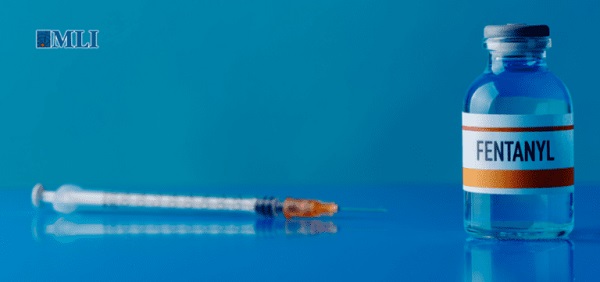Business
Report: Federal agencies spent millions of taxpayer money torturing cats

U.S. Sen. Rand Paul, R-Kentucky
From The Center Square
By
A new report published by U.S. Sen. Rand Paul, R-KY, highlights more than $1 trillion worth of taxpayer money spent on projects that he argues wastes and abuses taxpayer money.
Tucked in the report are three programs funded by federal agencies using millions of taxpayer dollars to experiment on cats.
The details are explicit and gruesome.
$11 million on Department of Defense “Orwellian cat experiments”
The US Department of Defense spent nearly $11 million on “Orwellian cat experiments” that have nothing to do with training the U.S. military or national defense.
“When George Orwell wrote 1984, he couldn’t have imagined the bizarre, dystopian reality we find ourselves in today where tax dollars are being spent to shock cats into having erections and defecating marbles. Yes, you read that correctly,” the report states.
Through the DOD’s, Defense Advanced Research Projects Agency (DARPA), $10,851,439 of taxpayer dollars were allocated to the University of Pittsburgh to conduct “grotesque and extremely invasive experiments on cats.”
This involved slicing open the backs of male cats to expose their spinal cords and inserting electrodes to send electric shocks “to make cats have an erection.”
The cats were then subjected to “even more electric shocks, sometimes for up to 10 minutes at a time, before having their spinal cords severed to paralyze their lower bodies,” the report states. “And just for good measure, the shocks continued for another 10 minutes. All this, in the name of ‘science.’”
In another DARPA-funded experiment, balloons were inserted into the cats’ colons and marbles into their rectums “to force these poor animals to defecate the marbles via electric shock.”
“Nothing says ‘national defense’ quite like torturing cats to poop marbles,” the report notes. “If we can’t stop the government from shocking cats into defecating marbles, then what can we stop?”
$2.24 million on feline COVID experiments
The report also notes that under the direction of Dr. Anthony Fauci, since 2022, the National Institute of Allergy and Infectious Diseases and the U.S. Department of Agriculture allocated $2.24 million in grants to Cornell University to conduct feline COVID experiments.
Through a University of Illinois NIAID subgrant, Cornell received $1.59 million over the past two years in addition to a $650,000 USDA grant, bringing the total to $2.24 million, the report notes.
The experiments led to the suffering and death of 30 cats, according to the records of the experiments, the report notes.
The experiments involved injecting healthy cats with COVID-19, observing them suffer and then killing them in groups of four. The cats were not given any type of vaccine or treatment but killed as early as two days after being injected and left isolated in cages.
NIAID funding for the program is slated to continue through 2025; the USDA’s through May 2026, the report notes.
“It’s a mystery as to why the U.S. government continues to fund these barbaric types of studies, especially when the knowledge gained is either useless to society or could be learned without torturing an animal,” the report states.
$1.5 million to torture primarily female kittens
The National Institutes of Health spent more than $1.5 million to torture primarily female kittens in an extreme example “of waste and cruelty,” the report found.
“If you learned that your money is being used to electro-shock young kittens, torturing them for hours on end, and to the point that they vomit, would you believe it?” the report asks. “Since 2019, $1,513,299 worth of taxpayer money has been going to these medieval-type experiments. This is not some distant, dystopian future; it’s happening right now at the University of Pittsburgh, courtesy of a grant from the NIH.”
According to the report, primarily female kittens between four and six months old were strapped to a hydraulic table, spun 360 degrees, flashed with bright lights, injected with copper sulfate, had holes drilled into their skulls, to be “shocked, and abused without resistance.”
According to NIH, the purpose of the experiments is to study how different species, like cats and monkeys, respond to motion sickness. Understanding responses to the test “could have implications for human health, potentially aiding in the treatment of conditions like vertigo or helping us understand the effects of space travel on the human body,” the report states.
The report cites primary sources and includes photographs of the animals and diagrams of the machines used.
Alberta
Made in Alberta! Province makes it easier to support local products with Buy Local program

Show your Alberta side. Buy Local. |
When the going gets tough, Albertans stick together. That’s why Alberta’s government is launching a new campaign to benefit hard-working Albertans.
Global uncertainty is threatening the livelihoods of hard-working Alberta farmers, ranchers, processors and their families. The ‘Buy Local’ campaign, recently launched by Alberta’s government, encourages consumers to eat, drink and buy local to show our unified support for the province’s agriculture and food industry.
The government’s ‘Buy Local’ campaign encourages consumers to buy products from Alberta’s hard-working farmers, ranchers and food processors that produce safe, nutritious food for Albertans, Canadians and the world.
“It’s time to let these hard-working Albertans know we have their back. Now, more than ever, we need to shop local and buy made-in-Alberta products. The next time you are grocery shopping or go out for dinner or a drink with your friends or family, support local to demonstrate your Alberta pride. We are pleased tariffs don’t impact the ag industry right now and will keep advocating for our ag industry.”
Alberta’s government supports consumer choice. We are providing tools to help folks easily identify Alberta- and Canadian-made foods and products. Choosing local products keeps Albertans’ hard-earned dollars in our province. Whether it is farm-fresh vegetables, potatoes, honey, craft beer, frozen food or our world-renowned beef, Alberta has an abundance of fresh foods produced right on our doorstep.
Quick facts
- This summer, Albertans can support local at more than 150 farmers’ markets across the province and meet the folks who make, bake and grow our food.
- In March 2023, the Alberta government launched the ‘Made in Alberta’ voluntary food and beverage labelling program to support local agriculture and food sectors.
- Through direct connections with processors, the program has created the momentum to continue expanding consumer awareness about the ‘Made in Alberta’ label to help shoppers quickly identify foods and beverages produced in our province.
- Made in Alberta product catalogue website
Related information
2025 Federal Election
ASK YOURSELF! – Can Canada Endure, or Afford the Economic Stagnation of Carney’s Costly Climate Vision?

From Energy Now
By Tammy Nemeth and Ron Wallace
Carney’s Costly Climate Vision Risks Another “Lost Liberal Decade”
A carbon border tax isn’t the simple offset it’s made out to be—it’s a complex regulatory quagmire poised to reshape Canada’s economy and trade. In its final days, the Trudeau government made commitments to mandate climate disclosures, preserve carbon taxes (both consumer and industrial) and advance a Carbon Border Adjustment Mechanism (CBAM). Newly minted Prime Minister Mark Carney, the godfather of climate finance, has embraced and pledged to accelerate these commitments, particularly the CBAM. Marketed as a strategic shift to bolster trade with the European Union (EU) and reduce reliance on the U.S., a CBAM appears straightforward: pay a domestic carbon price, or face an EU import fee. But the reality is far more extensive and invasive. Beyond the carbon tariffs, it demands rigorous emissions accounting, third-party verification and a crushing compliance burden.
Although it has been little debated, Carney’s proposed climate plan would transform and further undermine Canadian businesses and the economy. Contrary to Carney’s remarks in mid-March, the only jurisdiction that has implemented a CBAM is the EU, with implementation not set until 2026. Meanwhile, the UK plans to implement a CBAM for 1 January 2027. In spite of Carney’s assertion that such a mechanism will be needed for trade with emerging Asian markets, the only Asian country that has released a possible plan for a CBAM is Taiwan. Thus, a Canadian CBAM would only align Canada with the EU and possibly the UK – assuming that those policies are implemented in face of the Trump Administrations’ turbulent tariff policies.
With the first phase of the EU’s CBAM, exporters of cement, iron and steel, aluminum, fertiliser, electricity and hydrogen must have paid a domestic carbon tax or the EU will charge more for those imports. But it’s much more than that. Even if exporting companies have a domestic carbon tax, they will still have to monitor, account for, and verify their CO2 emissions to certify the price they have paid domestically in order to trade with the EU. The purported goal is to reduce so-called “carbon leakage” which makes imports from emission-intensive sectors more costly in favour of products with fewer emissions. Hence, the EU’s CBAM is effectively a CO2 emissions importation tariff equivalent to what would be paid by companies if the products were produced under the EU’s carbon pricing rules under their Emissions Trading System (ETS).
While that may sound simple enough, in practice the EU’s CBAM represents a significant expansion of government involvement with a new layer of bureaucracy. The EU system will require corporate emissions accounting of the direct and indirect emissions of production processes to calculate the embedded emissions. This type of emissions accounting is a central component of climate disclosures like those released by the Canadian Sustainability Standards Board.
Hence, the CBAM isn’t just a tariff: It’s a system for continuous emissions monitoring and verification. Unlike traditional tariffs tied to product value, the CBAM requires companies exporting to the EU to track embedded emissions and submit verified data to secure an EU-accredited verification. Piling complexity atop cost, importers must then file a CBAM declaration, reviewed and certified by an EU regulatory body, before obtaining an import certificate.
This system offers little discernible benefit for the environment. The CBAM ignores broader environmental regulatory efforts, fixating solely on taxation of embedded emissions. For Canadian exporters, Carney’s plan would impose an expensive, intricate web of compliance monitoring, verification and fees accompanied by uncertain administrative penalties.
Hence, any serious pivot to the EU to offset trade restrictions in the U.S. will require a transformation of Canada’s economy, one with a questionable return on investment. Carney’s plan to diversify and accelerate trade with the EU, whose economies are increasingly shackled with burdensome climate-related policies, ignores the potential of successful trade negotiations with the U.S., India or emerging Asian countries. The U.S., our largest and most significant trading partner, has abandoned the Paris Climate Agreement, ceased defence of its climate-disclosure rule and will undoubtedly be seeking fewer, not more, climate-related tariffs. Meanwhile, despite rulings from the Supreme Court of Canada, Carney has doubled down on his support for the Trudeau governments’ Impact Assessment Act (Bill C-69) and confirmed intentions to proceed with an emissions cap on oil and gas production. Carney’s continuance of the Trudeau governments’ regulatory agenda combined with new, proposed trade policies will take Canada in directions not conducive to future economic growth or to furthering trade agreements with the U.S.
Canadians need to carefully consider whether or not Canada can endure, or afford, Carney’s costly climate vision that risks another “lost Liberal decade” of economic stagnation?
Tammy Nemeth is a U.K.-based strategic energy analyst.
Ron Wallace is an executive fellow of the Canadian Global Affairs Institute and the Canada West Foundation.
-

 espionage2 days ago
espionage2 days agoHong Kong Detains Parents of Activist Frances Hui Amid $1M Bounty, Echoing Election Interference Fears in Canada
-

 2025 Federal Election21 hours ago
2025 Federal Election21 hours agoMark Carney Vows Internet Speech Crackdown if Elected
-

 Business2 days ago
Business2 days agoClosing information gaps to strengthen Canada’s border security and track fentanyl
-

 2025 Federal Election13 hours ago
2025 Federal Election13 hours agoPPE Videos, CCP Letters Reveal Pandemic Coordination with Liberal Riding Boss and Former JCCC Leader—While Carney Denies Significant Meeting In Campaign
-

 Freedom Convoy1 day ago
Freedom Convoy1 day agoA Miscarriage of Justice
-

 2025 Federal Election19 hours ago
2025 Federal Election19 hours agoTrudeau and Carney Have Blown $43B on EVs
-

 Business2 days ago
Business2 days agoTrumpian chaos—where we are now and what’s coming for Canada
-

 2025 Federal Election1 day ago
2025 Federal Election1 day agoPoilievre will make it harder for politicians to boost their portfolios, close Carney loopholes





